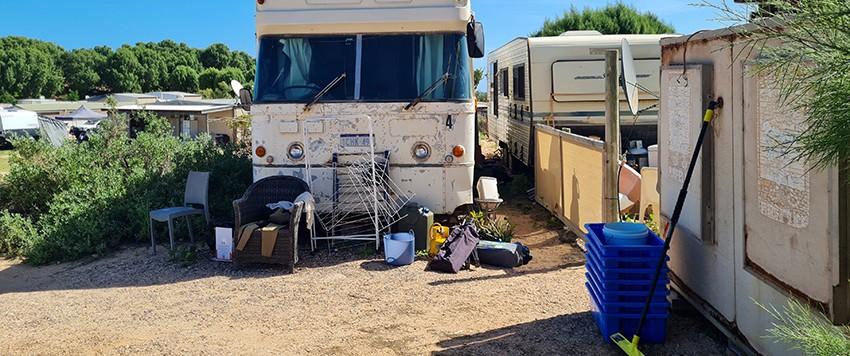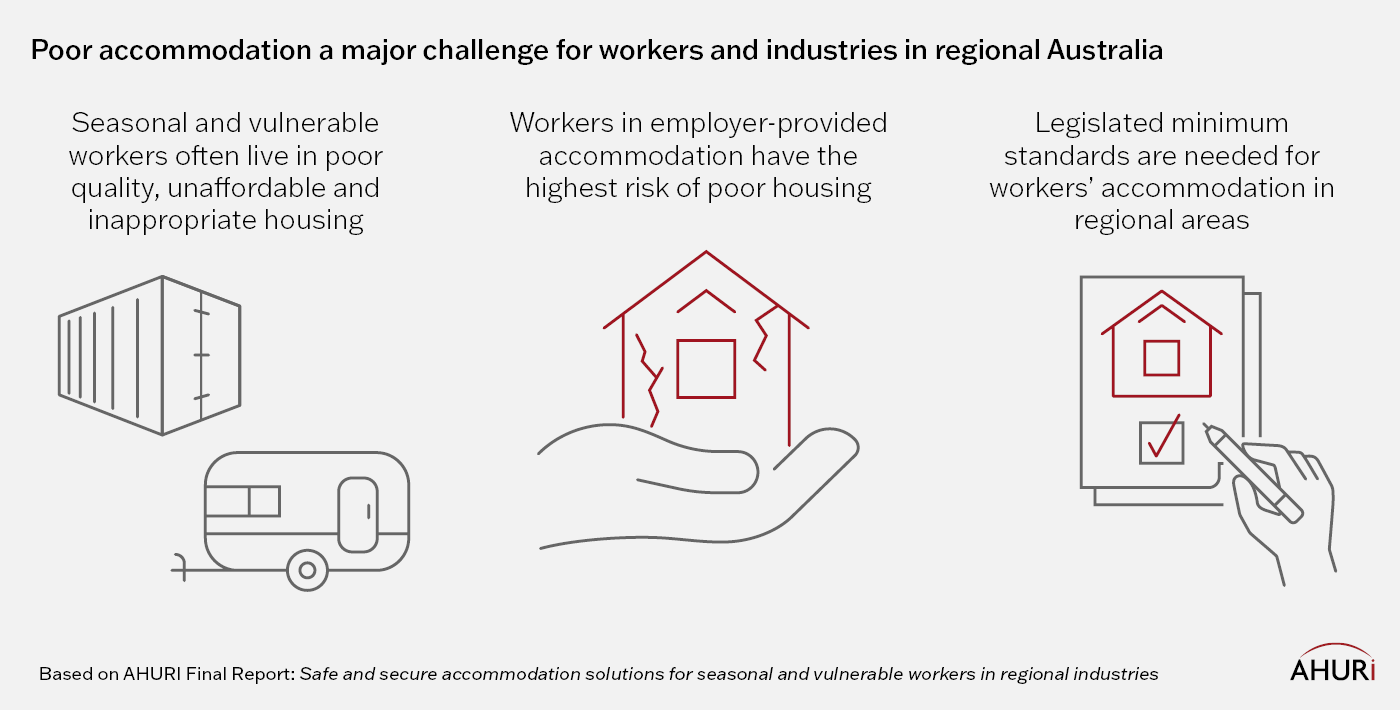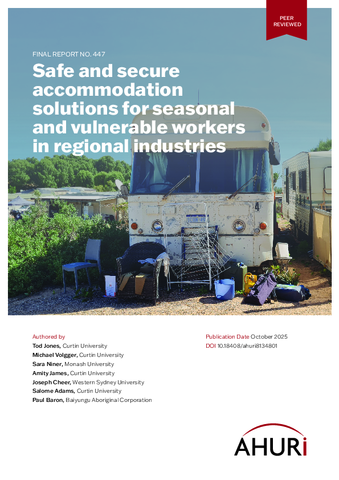What this research is about
This research looked at ways seasonal and vulnerable workers in regional Australia can be better housed. It provides a policy framework for government and industry stakeholders to ensure a healthy, safe and productive workforce.
Why this research is important
Many businesses in regional Australia rely on seasonal workers, including workers from migration schemes. These workers help regional areas stay economically competitive.
Changes in regional housing markets have greatly increased the cost of housing. As a result, a lack of affordable and available housing often places seasonal and vulnerable workers in inappropriate and poor-quality housing. This also makes it hard for businesses to attract and retain workers in regional parts of Australia.
-
At a glance
-
Key findings
A key trait of seasonal and vulnerable workers in regional Australia is that they provide temporary and inexpensive labour. Many are from overseas.
There are two key factors that affect these workers. The first factor is whether workers can stay in Australia short-term or semi-permanently. The second is the type of visa the worker holds. Visa rules differ greatly between the Pacific Australia Labour Mobility scheme (PALM) and Working Holiday Maker scheme.
Even semi-permanent workers in skilled roles can experience precarious housing in regional locations where there is a severe shortage of residential housing.
Seasonal and vulnerable workers often live in poor quality housing
Seasonal workers often have to rely on temporary and informal housing. This includes shipping containers, caravans and portable buildings. Even in permanent housing, temporary measures such as bunk beds, sharing rooms and sharing facilities are common.
Workers in employer-provided accommodation are most vulnerable to living in poor-quality housing. However, they are least likely to raise concerns due to:
- lack of housing choice
- need for employment and dependence on employers
- lack of knowledge about their housing rights and how to raise complaints.
Seasonal workers' experiences of accommodation
Seasonal workers want housing they can afford and that allows them some control over their living space. Crowded accommodation is a common experience. Many workers value socialising and seek positive relationships with the local community.
PALM workers tend to focus on saving money to send home. They need private space to talk with family, facilities suitable for their length of stay and compatible housemates. However, PALM workers often experience precarious housing because they rely on their employer for accommodation. Their visa conditions prevent them from changing employer.
Working Holiday Maker scheme and Australian seasonal workers are more able to avoid regions or leave quickly if their accommodation is poor.
Six barriers to better housing
This research found six barriers to better accommodation.
- PALM scheme visa conditions prevent workers from changing employers; this greatly increases their risk of exploitation, including in accommodation.
- Inappropriate standards apply to worker accommodation.
- Workers are unaware of their rights.
- Tight local rental markets affect housing supply.
- Building new accommodation is affected by high land and construction costs.
- Native title can be seen as a constraint, which limits engagement with Aboriginal organisations in regional areas.
-
Policy actions
Adjusting PALM scheme visa conditions
Simple processes need to be set up so PALM workers can change employers once initial costs have been paid off. Given the higher risks of exploitation for these workers, there should be regular independent accommodation inspections to enforce mandated standards. PALM workers should have access to a cultural mediator to support advocacy. They should be provided contact information for supporting organisations and a simple accommodation checklist in their own language.
There should be separate standards for PALM workers who are seasonal and those who stay over 12 months.
Worker accommodation standards
Governments and stakeholders need to decide standards for workers’ accommodation in regional industries. This could lead to legislated minimum standards for employer-provided accommodation.
Information on housing rights for workers
Workers should have access to information about applicable housing standards and how to have issues addressed. Regional communications hubs could improve matching of housing supply and demand, and provide accurate information to workers.
Increase availability of existing accommodation
Registration of short-term rentals will help state governments to regulate their impact on housing. A vacant residential land tax would encourage existing accommodation to become available for the rental market. Municipal level programs could also help PALM workers to sublet rooms from homeowners.
Supply new regional worker accommodation
Developing a supply of new regional worker accommodation will likely require public-private partnerships. This would encourage collaboration between businesses for the best possible long-term outcomes.
State and local planning could encourage investment through planning schemes that set aside land for worker accommodation. Planning for major regional development projects could be required to address worker accommodation.
Collaborations with Aboriginal organisations
There may be opportunities to collaborate with Aboriginal organisations to develop worker accommodation. Traditional Owners' responsibilities and relationships need to be considered in discussions, planning and negotiations with Aboriginal organisations. Aboriginal organisations require independent legal and financial advice. This helps reduce the risks of uninformed decision-making.
-
Research design
This research included a literature review, field research and interviews with industry stakeholders and workers. It also included focus group discussions and case studies across seven locations in WA, Victoria and NSW.



